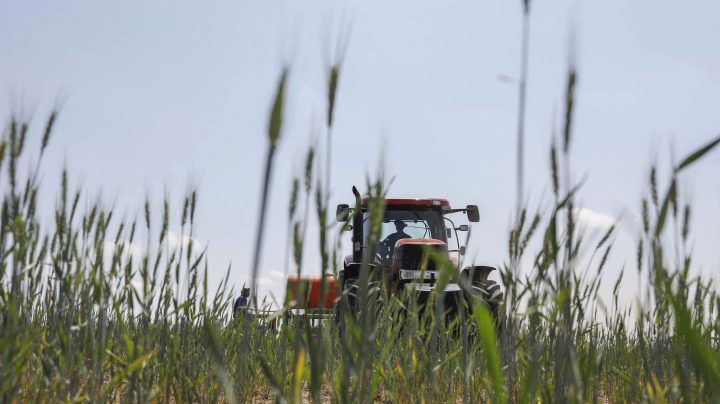
How inflation and “wild weather” are affecting one family farm
How inflation and “wild weather” are affecting one family farm

“My Economy” tells the story of the new economic normal through the eyes of people trying to make it, because we know the only numbers that really matter are the ones in your economy.
Anne Schwagerl is getting ready to harvest crops on Prairie Point Farm in Browns Valley, Minnesota, which she co-owns and operates with her husband, Peter. She’ll start with her soybeans, then move on to corn.
“It’s been an OK year, another year of kind of wild weather,” Schwagerl said. “Crops don’t love going from cold and wet to very hot and dry, so that will affect our yields. I think some of our crops, we’ll see a yield drag on it.”
To reduce risk from unpredictable weather on the farm, Schwagerl has been experimenting with new crops, like Kernza and winter camelina. The varieties she’s planting are being released by the University of Minnesota’s Forever Green Initiative.

“I’m quite excited about the co-benefits that not only am I doing something that’s really climate-smart and good for my soil health, there’s an incentive in that you have something to sell at the end too,” she said.
Schwagerl sees inflation regularly on her trips to the grocery store. “It’s frustrating as a farmer because I know that I’m not getting wealthy off those increased food prices.”
She’s also started increasing the size of her personal garden to feed her family and try to keep the grocery bill down.
“As much as I can convince a 6- and a 9-year-old to eat more local seasonal ingredients, I’m trying to do that,” Schwagerl said. “They’re also regular kids too, so it’s striking that balance. They’re like, ‘But can we still get Fruit Roll-Ups?’ I’m like, ‘Eh, I guess you can still get your Fruit Roll-Ups.”
Let us know how your economy is doing using the form below, and your story may be featured on a future edition of “My Economy.”
There’s a lot happening in the world. Through it all, Marketplace is here for you.
You rely on Marketplace to break down the world’s events and tell you how it affects you in a fact-based, approachable way. We rely on your financial support to keep making that possible.
Your donation today powers the independent journalism that you rely on. For just $5/month, you can help sustain Marketplace so we can keep reporting on the things that matter to you.


















